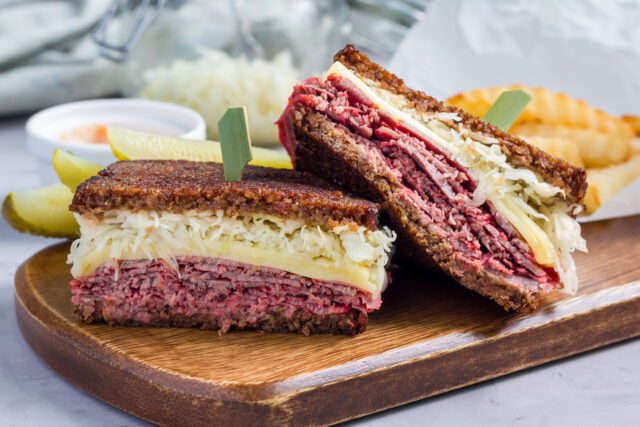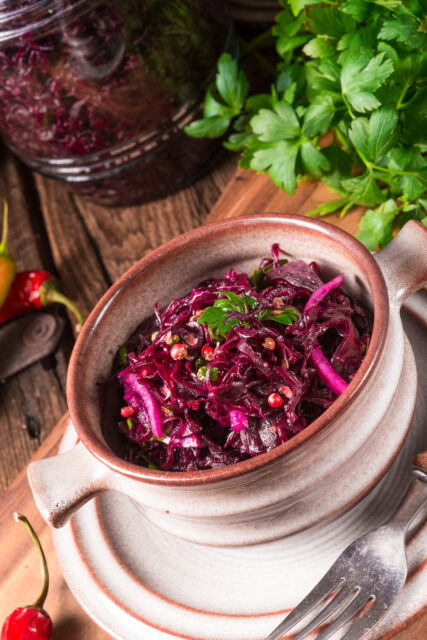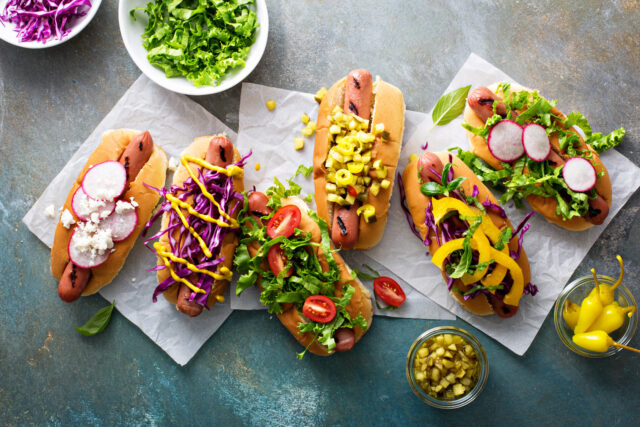
Relish Life’s Sweet and Sauer Moments with a Sandwich
Much praise is heaped on the fact that pickling is a way to use vegetables at their freshest and cheapest. But, there’s much to be said about the fact that those ‘not-so-salad-friendly-vegetables’ have a perfect role in pickling and fermenting as well. And when it’s all wrapped-up in a sandwich, no one cares how crisp and colourful it is, just how tasty it is.

What is a sandwich? Quick, don’t hesitate, what comes to mind?
Well, that might depend greatly on where you are from, what your dietary restrictions are and what you feel like on any given day. Well, from whole grain homemade breads packed with the freshest, healthiest ingredients the good earth has to offer to the nastiest (tastiest) street meat the food carts have to offer at 3 a.m., a sandwich is a hassle-free way to take a four square meal with you on the go. So let’s have at it.
Sandwich culture for me started as a simple, but open mined and eternally hungry kid, heading of to elementary school with a Starsky & Hutch lunchpail with a thermos that inevitably scarred my apple, turned my granola bar to an oat-based powder and turned a peanut butter and jam sandwich into a rather unappetizing white trash flatbread. Which is why I am eternally grateful to have grown up in an immigrant culture that saved me from a bland tasteless, carbon-copy way of consuming basic nutrients. And into a life where what I haven’t eaten is something that I must have, at cost of finances and gastric well-being.
The Missing Fermented Link

Corned beef… Swiss cheese… rye bread… sauerkraut? Wait. Mom! This is a Rueben!!!
– Bobby Hill, King of the Hill.
Few can disagree that sauerkraut is the quintessential element to many sandwiches, and is one of the simplest fermented foods anyone could ask for. It works on so many levels. Sauerkraut is a perfect super healthy way to add a sharp yet deep volume to a soup, mellowed out with a light frying as a bed for sausage, cutlet or roast vegetables. No hot dog in my opinion is complete without it.
So let’s start with the king of fermented sandwich toppings. Sauerkraut, less commonly written as sourcrout, lasts for ages and can be made year-round with very little effort and at very little cost. Lactobacillus, leuconostoc and pediococcus are the main lactic bacteria found in the fermentation. Commonly nothing more than cabbage, salt and a bit of seasoning, it can take on a wide range of seeds and veg mix-ins to give it any amount of depth you wish.
Made in a very similar way to kimchi, sauerkraut got its start in the Germanic areas of Europe stretching in to the Alsace regions of France. Eaten as a much needed source of vitimins need to fight of disease by the Pennsylvania Dutch (a.k.a. Amish and Mennonites of German and Swiss stock) immigrants on their voyage to the new world. The word sauerkraut first appeared in American-English in 1776.
It is thought that sauerkraut was first introduced to the Europeans as a result of the salted vegetables carried by Genghis Khan during his conquests. It was likely based on the pickling technique the Chinese used by preserving thinly sliced vegetables in wine.
For the vegans, and any other foodies out there, Laura Miller at Tastemade’s ‘Raw. Vegan. Not Gross’ has a great recipe that we’ve been making at home for the last couple of years. She’s fantastic!
Red Cabbage Sauerkraut | Raw. Vegan. Not Gross.
https://youtu.be/zgfwA7qt0lg
Get Saucy and Relish the Moment

There are three main techniques used in pickling; 1) Quick Pickling where vegetables are blanched and packed in a pickling solution, 2) Brining which covers vegetables in either salt or vinegar bath where they are bruised to release liquid and left for several days and of course 3) Fermentation where lactic acid is produced at room temperature by naturally occurring microorganisms digesting the sugars.
Any preserved fruit or vegetable can be blended with and array of sugars and spices and canned to make relish. Whether it’s an Indian chutney, tartar sauce, salsa, muhammara, doenjang or pesto, relish is a great way of taking fermented veg to a condiment that is ready to use.
Any given hotdog cart growing up in Toronto would have a wide variety of relishes available. So much so that along with the mandatory squeeze of mustard and spoonful or three of sauerkraut the bread and butter relish, corn relish, chow chow (a sweet almost candied mix of veg) and tomato relish could serve as a side salad.
You Can Ferment That You Know
Salsa is often thought of as a being a very fresh and lively blend of tomato, onion, pepper and jalapeno. But any or all of those ingredients can be first fermented before adding it to the final fresh ingredients. There is of course curtido a lesser known Central American condiment which actually more similar to sauerkraut. Some of the best salsas I’ve had have been rather unorthodox and had some degree of fermentation. Fermented onions or peppers can be added to diced persimmon or pear to add a sour depth to the sweetness of the fruit before hitting it with that final kick of chili. And I have no problem calling a taco or burrito a sandwich, who doesn’t like to bring a dollop of salsa to any summer sandwich.
Pesto is often though of as the domain of pasta, but it’s welcome on almost any sandwich I can think of. Most people think of the orthodox basil / garlic / pinenut variety of pesto, but almost any ingredients can go into a pesto, roasted pepper and walnut, much like a muhammara is my favorite. And of course you can toss your noodles in it, and of course you can spread it on your sandwich, and of course you can ferment it. Actually fermenting as many of the ingredients as possible in a pesto will help cut down on the salt needed, as well as the sharpness produced by the lactic acids marrying far more soundly with the richness of the olive oil.
It’s a sad roast beef sandwich that is without horseradish. Horseradish in the western sense is related to Japanese wasabi, but the method of preparing it is slightly different. The root is chopped and blended into a mash similar to wasabi, it is however almost always fermented in a sugar and salt brined and fermented for several days at room temperature.
There’s a chance that the meat on your sandwich is fermented, and the bread as well. Of course it’s certain that the cheese is. So If the vegetables and condiments are too, that’s just good eating!
